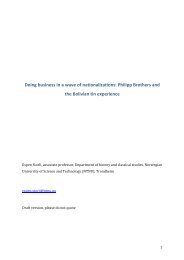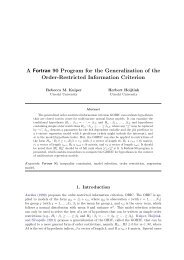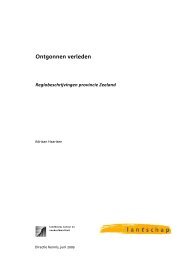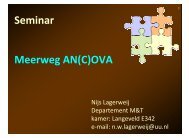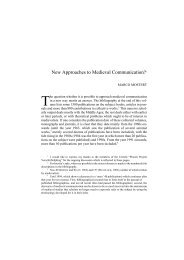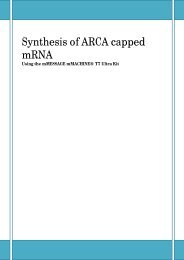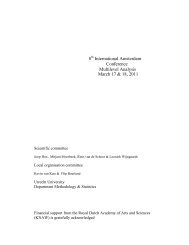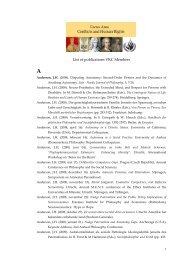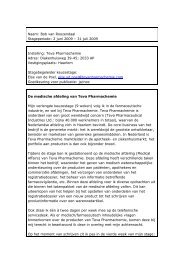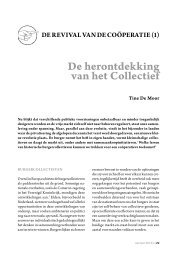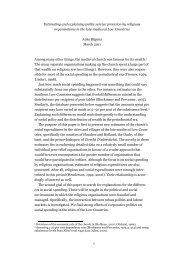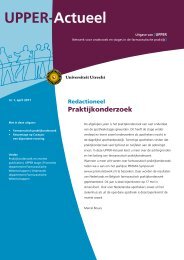CH8.Ewout Frankema.education.pdf
CH8.Ewout Frankema.education.pdf
CH8.Ewout Frankema.education.pdf
- No tags were found...
You also want an ePaper? Increase the reach of your titles
YUMPU automatically turns print PDFs into web optimized ePapers that Google loves.
European school tradition. His father was a desa-school teacher at Java. Sukarno firstcompleted three years of primary <strong>education</strong> in the vernacular and continued at aEuropean primary school. In 1915 he attended the Hogere Burger School (HBS), whichrepresented the highest level of Western secondary <strong>education</strong>. In 1920 he joined theTechnische Hoogeschool in Bandung and was among the first students to graduate as anengineer in 1925. No doubt, his long background in Western higher <strong>education</strong> endorsedhis ideas about the importance of <strong>education</strong> for self-determination, both on a personal aswell as a national level (Giebels, 1999). Mohammed Hatta pursued a similar route.After his secondary school in Batavia he travelled to the Netherlands to studyeconomics and business at the Handelshogeschool in Rotterdam (currently the ErasmusUniversity) and stayed for 11 years (1921-1932). Exactly in this period Hatta started tocampaign for non-cooperation and mass-actions against the colonial oppressor,activities for which he was detained in the Netherlands and later again in Indonesia, formore than six years.The key figures dominating the political scene during the early years of independence inthe Congo had a very different background. They grew up in a time when thesegregation policies were strictly maintained. The closed access to higher offices in thecolonial administration or the key position in international commerce or the miningindustry, implied that there was little need to offer higher levels of non-vocationaltraining to the indigenous population. The intellectual development of the later politicalleaders was therefore largely shaped by the jobs and positions they were to fulfill.Lulumba, Kasavubu, Mobutu and Tshombe all attended a mission school for theirprimary <strong>education</strong>. Lulumba’s highest degree was a one year course at the governmentpost office training school. He started his working career as a postal clerk and atravelling beer salesman. Kasavubu was trained as a teacher at a Cathcolic missionaryschool. Mobutu’s <strong>education</strong>al career was completed at the Ecole Centrale des Sous-Officiers in Luluaburg, where he followed a two year’s course on accounting andsecretarial work. Thsombe was trained as an accountant and pursued the business careerof his farther in the Katangese retail sector (ref.).Black children began to be admitted to European secondary schools only from 1950onward and their numbers remained very small. The first university in the Congo, theLeuven University, was founded near Léopoldville in 1954. It admitted black studentsfrom the start, but the first cohorts of Congolese still had to complete secondary school.In 1956 a state university was established in Elisabethville (Mantels, 2007). Hence, atthe eve of independence in 1960 just a handful of Congolese were enrolled in tertiary<strong>education</strong> and even fewer actually held a university degree. Most of the students wereenrolled in the humanity and social science faculties, but not in the technical faculties.In 1960 there were 13 students at the tertiary level enrolled in natural sciences, 18 inengineering, 71 in the medical sciences and 26 in agricultural sciences. Together thisgroup formed 30% of a total of 423 tertiary enrolled and the majority consisted ofEuropean, rather than Congolese, students (UNESCO, 1965; Mantels, 2007).Various accounts of the negotiations on the conditions for independence at the roundtable conference (ronde tafel conferentie) in Brussels in 1960 stress the gap in politicalcunningness between the young group of Congolese representatives and the hautecoutureof Belgium’s professional politicians (Etambala, 1996: pp. 31-33; van15



